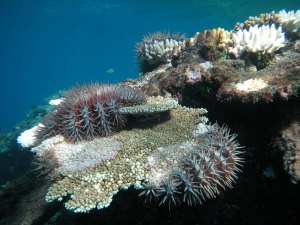
Figure 1: Pisaster ochraceus. Aggregation on a rock shore at Barkeley Sound, British Columbia, removing gooseneck barnacles and small mussels. Photo courtesy of C. Robles.
Wild Thing is an occasional series where JHU Press authors write about the flora and fauna of the natural world—from the rarest flower to the most magnificent beast.
Guest post by John M. Lawrence
Starfish are icons of the sea. Among the most fascinating animals in the world’s oceans, they are one of the classes of echinoderms that also include sea urchins, brittle stars, sea cucumbers and sea lilies.
Starfish live in a variety of marine habitats where they can be major predators that greatly affect their communities. Studies by the University of Washington marine biologist, Robert Paine, on the starfish Pisaster ochraceus of the west coast of North American (Figure 1) led him to develop the concept of keystone species. Just as the keystone holds an arch together, a keystone species is a dominant predator that determines community structure.

Figure 2: Acanthaster planci. Individuals feeding on coral at Keeper Reef, central Great Barrier Reef, Australia. White areas are feeding scars. Photo courtesy of K. Fabricius.
Starfish can be notorious for their effect on the environment. The crown-of-thorns starfish, Acanthaster planci, (Figure 2) has had periodic outbreaks over the years that have had catastrophic effects on corals of the Great Barrier Reef. Marine biologists in the Indo-Pacific, including those at the Australian Institute of Marine Science, have been attempting to understand the bases for these outbreaks.

Figure 3: Asterias amurensis. Aggregation feeding on mussels removed from ship’s hulls in the upper intertidal zone, Derwent River Estuary, Tasmania. Photo courtesy of M. Byrne.
Starfish can have a direct economic effect. The starfish Asterias forbesi is a major predator of shellfish off the northeast US coast. In the late nineteenth century, major attempts to eradicate populations of this species, or at least control them, proved futile. A closely related species, Asterias amurensis (Figure 3), is found in subarctic Pacific waters off the coasts of Russia and Japan. However, A. amurensis appeared in 1986 in Tasmanian waters. Genetic studies showed the source population was from central Japan. Release of larvae in ballast water taken up in a Japanese harbor and discharged at the Hobart wharf is considered the explanation for the introduction of the species. I remember reading an account in the newspaper of the appearance of A. amurensis in Tasmania and thinking to myself, “It’s all over”. The starfish has greatly affected bivalve populations there. Because of this, attempts were made to control the population by removal of the starfish, called “starfish buster” campaigns. They proved as futile as those with A. forbesi over one-hundred years ago off the US coast. The starfish has expanded its distribution to off the southern Australian mainland.

Figure 4: Heliaster helianthus. Individual on a boulder pursuing sea urchins at Cisnes Bay, northern Chile. Photo courtesy of C. Gaymer.
Starfish have a phenomenal capacity for voluntary arm loss, called autotomy, and subsequent complete arm regeneration. This is usually in response to attack by a predator, just as a lizard will autotomize its tail in response to attack. An amazing example of this ability is found in the starfish Heliaster helianthus (Figure 4), also known as the sun-star because it has many arms instead of the usual five, found off the west coast of South America. Heliaster helianthus is a prey of another starfish, Meyenaster gelatinosus. When attacked by M. gelatinosus, H. helianthus does not attempt to escape. It remains immobile and slowly autotomizes several arms that are in contact with the predator’s mouth. After autotomy is complete, the H. helanthus moves away while the M. gelatinosus digests the arms. The ability of H. helianthus to autotomize its arms is due to the presence of a remarkable form of collagen between the arms and at their base that dissociates in response to neural stimulation, apparently resulting from the attack. This breaks down the connections of the arm to the body. Because of this capacity to regenerate the arm, starfish are a model for studying the regeneration of an organ.
My book is far removed from the first book on starfish, De stellis marinas, by Iohannis Henrici Linckii, published in Leipzig in 1733. Linckii had a charming woodcut at the beginning of the book with a caption “Non coelo tantum, sed et mari suae stellae sunt” (“Not only in the heavens, but stars are also in the sea” or “As above, so below”.
 John M. Lawrence is a professor of integrative biology at the University of South Florida and the editor of Starfish: Biology and Ecology of the Asteroidea.
John M. Lawrence is a professor of integrative biology at the University of South Florida and the editor of Starfish: Biology and Ecology of the Asteroidea.

